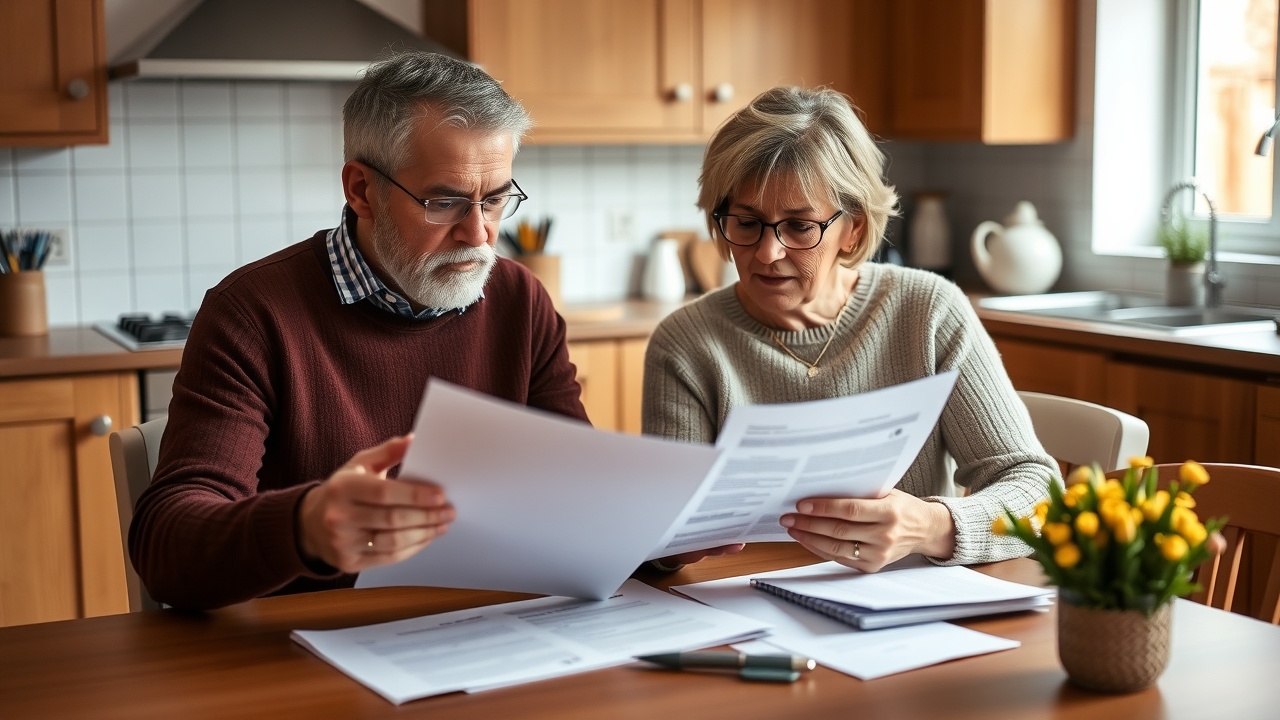
Are you looking for a moderate level of comfort in retirement? If you're single, it's much more difficult to attain, and you might have to spend thousands more to have the retirement you desire
When it comes to booking vacations or heating a house, single people frequently have to pay more than a couple would.
According to recent research, this also applies to retirement, so if you're single, you'll need to contribute more to your pension fund in order to have a comfortable retirement.
Standard Life estimates that in order to maintain a moderate standard of living in their golden years, single pensioners require 225,000 more in their pension pot than couples.
A significant potential shortfall could result from single people having to pay for everything alone, while couples can combine their savings and divide costs.
To meet the Pension and Lifetime Savings Association's (PLSA) minimum standard of living in retirement, single pensioners must save an additional 54,500 on top of their state pension.
Couples with two full state pensions, on the other hand, wouldn't require any additional savings to get to the same amount.
Whether you're single by choice or by circumstance, living alone has a cost, according to Mike Ambery, retirement savings director at Standard Life, a division of Phoenix Group. Despite the fact that it may seem unfair, people who live alone do not simply cut their mortgage, rent, utility, and holiday expenses in half.
"Pension savings are no different. Couples can pool their resources, but single retirees must accumulate significantly more to live the same retirement lifestyle.
How much is required for a basic retirement for a single retiree?
According to the PLSA, single retirees must earn at least £14,400 annually after taxes. This covers the necessities and a week of vacation time in the UK, but it excludes a car. This is the minimum standard of living in retirement.
Assuming a single retiree receives the full new state pension, which is currently 11,973 per year (20252026), they will require an additional 2,884 per year to cover their expenses at the minimal level of luxury.
They would need to have about £54,500 in retirement savings at current rates in order to purchase an inflation-linked annuity, which is a guaranteed income for life, to make up this shortfall.
However, according to the PLSA, pensioner couples require an annual income of £22,400 in order to achieve the same standard of living. The couple wouldn't need to have any additional retirement savings to cover the cost of a basic lifestyle because this would be fully covered by two full state pensions.
How much does it cost to have more luxury when you retire?
Pensioners who are single and want a little more luxury in retirement face a greater disparity than their couples counterparts.
According to the PLSA, a single pensioner needs about 31,300 in after-tax income annually to maintain a moderate standard of living, which includes a car and one two-week vacation abroad.
To make up the difference, after taxes, a single person would require an annuity that pays £24,010 annually if they were to receive the full new state pension. This would require them to save about 439,000.
In contrast, pensioner couples require an annual income of £43,100 after taxes. They would require 428,000 in their joint pension pot to reach this income level, accounting for two full state pensions.
They would therefore need to save 214,000 apiece, which is almost half of what a single pensioner would need to save.
Currently, single pensioners would need to save a pension pot of about 709,000 in order to have a truly comfortable retirement standard, which includes a three-week vacation abroad, a complete kitchen and bathroom replacement every ten to fifteen years, and a budget of 1,500 per year for clothing and footwear.
In order to achieve the same lifestyle, a single pensioner would need to save 311,000 more than their couple peers, as pensioner couples would require 709,000 between them, or 398,000 each.
What is the required size of a pension fund?
An annuity that would provide you with the minimum, moderate, and comfortable income requirements in retirement would cost you the amount shown in the table below.
The numbers are based on the following assumptions: non-smoker, no underlying medical conditions, single life annuity, paid monthly in arrears, linked to RPI, and retirement at age 66. Income is taxed at a rate of 20% after being tax-free up to the personal allowance.
"Remember that relationships don't always last, and the significance of pension planning isn't limited to today's single people," Ambery says. Being aware of these numbers can be beneficial when planning for a possible single retirement or when contemplating pension sharing in divorce settlements.
"Whether you're single or in a relationship, it's critical to take charge of your financial happiness going forward. It can truly make a difference to start early, contribute consistently, and top off savings when you can.
Ways to make the most of your pension.
1. . Never choose to leave your employer's pension plan.
According to UK auto-enrollment regulations, employers are required by law to offer a pension plan to their employees. If you are 22 years of age or older and make at least 10,000 per year, you will be automatically enrolled as soon as you begin working.
You will begin contributing five percent automatically, and your employer must contribute at least three percent.
Don't cut back on your five percent contribution or opt out. By doing this, you risk losing your employer's contribution as well, which is essentially free money. Additionally, you will forfeit important tax benefits if you choose to opt out.
HMRC will reimburse you for the initial 20% tax you paid if, for instance, you are a basic-rate taxpayer and you contribute 80 to your pension.
2. Begin saving for your pension early.
Time is your friend when it comes to investing and retirement savings. Your pension will have more opportunity to grow and take advantage of compound returns if you begin building it earlier.
3. . Make as much as you can for your pension.
Up to 60,000 can be protected from taxes each year in your pension fund (including employer and personal contributions as well as any tax breaks). This indicates that it is wise to maximize your pension contributions.
Because you can't access your private pension until you're 55 (and starting in 2028, it will be 57), you might be hesitant to put money away that you could use right now. Investment growth, however, should cause it to increase considerably over time, and any capital gains or investment income will also be protected from taxes.
Although you can protect your investments from income and capital gains taxes with an ISA, pensions provide far more generous tax reliefs overall. That's because HMRC provides tax relief when you make a payment. In addition, you can make up to 60,000 tax-free contributions to your pension annually, whereas ISAs only permit 20,000.
4. If your employer will match your pension contributions, find out.
Some employers will match their employees' pension contributions up to a certain amount if they exceed the required 5 percent. Another excellent method to obtain free money is this one.
5. . Purchase optional National Insurance credits.
Consider purchasing voluntary National Insurance credits to supplement the amount of state pension to which you are entitled if you are not eligible for a full state pension due to a period of unemployment. The full state pension, which is £11,50240 annually, requires thirty qualifying years of National Insurance contributions.
Anyone who has received a state pension for three years or longer will typically benefit from making voluntary National Insurance contributions, as we discussed in a previous BFIA article.
6. . Request child benefits.
Taking time off work to care for children is another reason why some people lose out on important National Insurance contributions. There cannot be any gaps in your National Insurance record, though, because HMRC is aware that you are providing unpaid childcare if you claim child benefit.
You should still fill out the child benefit form in order to obtain your valuable National Insurance credits, even if you are not eligible to receive any money through child benefit (the high income charge applies to households with one parent earning 60,000 or more).
On the form, you can either check the box indicating that you would like the National Insurance credit but not the money, or you can claim the money and then reimburse it on your self-assessment tax return.














Leave a comment on: Those without a spouse will require an additional £225k in their pension fund